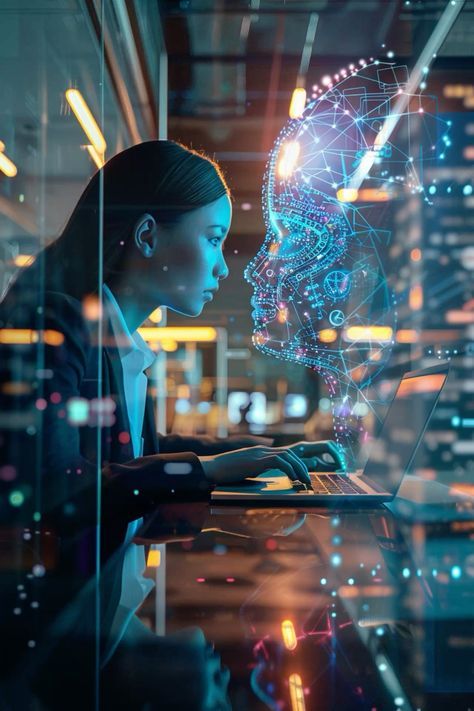Artificial Intelligence (AI) is no longer a futuristic idea—it’s here, reshaping how we work, communicate, and solve problems. But what powers AI? What are the actual techniques of AI that make it so impactful across industries?
This post breaks down the major AI techniques—from machine learning to generative models—and shows how they’re being applied in everything from nonprofits to publishing platforms. If you’re diving into AI transformation services for enterprises or curious about AI solutions for nonprofits, this guide is built for you.
📌 Before we go deeper, check out our related post on AI’s impact on industry innovation for context and real-world use cases.
📌 Table of Contents
- Introduction to AI Techniques
- Machine Learning (ML)
- Deep Learning
- Natural Language Processing (NLP)
- Computer Vision
- Expert Systems
- Generative AI Solutions
- AI for Nonprofits and Social Enterprises
- Final Thoughts

1. Introduction to AI Techniques
AI refers to the ability of machines to perform tasks that typically require human intelligence—like learning, problem-solving, recognizing speech, or interpreting images. The techniques used to develop AI systems vary depending on the use case, but most fall into a few core categories.
Many businesses today are investing in digital transformation consulting to better integrate these AI techniques into their workflows—whether through automating legacy systems or designing new digital tools.
2. Machine Learning (ML)
Machine Learning is the foundation of most AI systems. It uses statistical methods that allow machines to “learn” from data over time without being explicitly programmed.
🔧 Techniques in ML:
- Supervised Learning: Training with labeled data (e.g., email spam filters).
- Unsupervised Learning: Identifying patterns in data without labels (e.g., customer segmentation).
- Reinforcement Learning: Machines learn by trial and error (e.g., self-driving cars).
Many organizations offering AI transformation services for enterprises leverage machine learning to improve operational efficiency, customer experience, and decision-making.
3. Deep Learning
Deep Learning is a subset of machine learning that mimics how humans learn certain types of information. It uses neural networks with multiple layers—thus the term “deep.”
🧠 Common Applications:
- Speech recognition (think Siri or Google Assistant)
- Image classification (e.g., facial recognition)
- Predictive analytics in healthcare and finance
5. Computer Vision
Computer Vision enables machines to interpret visual information—photos, videos, and even live footage.
👁️ Used For:
- Object detection and tracking
- Medical image diagnostics
- Automated quality inspections in manufacturing
In digital transformation projects, especially in legacy system modernization solutions, computer vision can bring older, analog processes into the modern age—such as reading handwritten forms or scanning archived documents.
6. Expert Systems
An Expert System uses a knowledge base and a set of rules to mimic the decision-making ability of a human expert.
🧩 Examples:
- Medical diagnosis tools
- Loan eligibility systems
- Legal contract analyzers
Though older than other AI techniques, expert systems still have relevance, especially when combining compliance and regulatory solutions with newer technologies in fields like health and law.
7. Generative AI Solutions
Generative AI creates new content—from text to images to code—based on training data.
🔍 Use Cases:
- Writing articles or blog posts
- Creating design mockups
- Automating marketing content
In nonprofit technology support, generative AI helps create personalized donor emails, grant proposals, and reports. This is especially useful for orgs looking for AI solutions for nonprofits but with limited budgets or staff.
Generative AI solutions also underpin features in digital product design for nonprofits, allowing lean teams to test ideas quickly and cost-effectively.
8. AI for Nonprofits and Social Enterprises
AI is not just for big tech firms. Organizations in the public and nonprofit sectors are adopting AI to boost their impact while keeping costs low.
🚀 Top Techniques Being Used:
- Predictive modeling to identify at-risk populations
- Chatbots to answer common questions 24/7
- Sentiment analysis to understand community feedback
Platforms like Calls9 and Norus Technologies are already helping NGOs apply mobile app development for NGOs and Web3 for social enterprises, often combined with AI-based analytics and engagement tools.
📚 Referenced and Related Platforms
Throughout this post, we reference several widely trusted platforms that regularly publish or support AI and digital innovation content:
- Wikipedia: For baseline definitions of AI techniques and terminology.
- Forbes: Frequently covers real-world applications of AI in enterprise, finance, and tech sectors.
- MIT Technology Review: A go-to source for cutting-edge AI research and developments.
- SpringerOpen: Open-access academic journals for peer-reviewed AI research.
- Nature Machine Intelligence: A leading journal in AI innovations and scientific applications.
🧠 What Are the Techniques of AI?
1. Machine Learning (ML)
The backbone of AI. Machines learn from data to improve over time without being explicitly programmed. Used in email filtering, fraud detection, and recommendation systems.
- Techniques: Supervised, Unsupervised, Reinforcement Learning
- Used in: AI transformation services for enterprises
2. Deep Learning
Deep Learning uses layered neural networks that mimic the human brain. It powers facial recognition, autonomous driving, and real-time language translation.
- Real-world example: Used in custom mobile app development services for features like voice commands and facial login.
3. Natural Language Processing (NLP)
NLP helps machines understand and generate human language. It’s essential for chatbots, language translation, and search engines.
- Example: Academic publishing platforms use NLP for summarizing articles and keyword extraction.
- Platforms: NLP research is heavily featured in SpringerOpen and Nature Machine Intelligence.
4. Computer Vision
AI’s ability to “see” and analyze visual input like images and videos. It’s used in retail (checkout-free stores), healthcare (X-ray analysis), and security (facial recognition).
- Vital for legacy system modernization solutions where digitization of analog content is key.
5. Expert Systems
Rule-based AI that mimics human decision-making. Often used in medical diagnosis and legal review platforms.
- Still relevant in compliance and regulatory solutions, particularly in finance and law.
6. Generative AI
AI that creates new content—text, code, images, and even music. Think ChatGPT, DALL·E, and GitHub Copilot.
- Key to digital product design for nonprofits who need scalable content creation.
- Covered extensively by Forbes and MIT Technology Review in their business innovation sections.
🔍 AI in Nonprofits and Social Enterprises
AI isn’t just for Fortune 500s. Nonprofits are using it to increase their impact with less effort and budget.
Tools & Techniques:
- AI solutions for nonprofits: Automate reports, optimize outreach, predict trends
- Mobile app development for NGOs: Integrate AI for multilingual support, donor analytics
- Web3 for social enterprises: Combine AI with blockchain for transparency and security
Organizations like Norus Technologies and Calls9 are pioneers in blending nonprofit technology support with next-gen tools like generative AI solutions and digital transformation consulting.
🧠 AI in Academic Publishing
AI is also transforming how academic research is produced, reviewed, and published.
- Peer-reviewed open access journals like those on SpringerOpen are implementing NLP and ML to streamline submissions.
- Tools like academic journal submission platforms now use AI to auto-format citations, detect plagiarism, and recommend reviewers.
These advances are crucial to researchers and institutions using academic publishing platforms to stay ahead in a competitive scholarly landscape.
🚀 Why These Techniques Matter
Understanding these techniques helps you make smarter technology investments. Whether you’re launching a digital product, modernizing your infrastructure, or scaling your nonprofit, AI is the lever.
Explore AI transformation services for enterprises if you’re scaling big. Or check out AI solutions for nonprofits if you’re working toward impact with limited resources.
Need a deeper dive? Revisit our AI industry innovation post for strategies and examples.
9. Final Thoughts
Understanding the techniques of AI is the first step to leveraging its power. From machine learning to generative AI, these tools are transforming industries—and not just the private sector. They’re reshaping education, publishing, healthcare, and social impact work.
So whether you’re looking into AI transformation services for enterprises, or need tailored tech support for nonprofits, knowing the core techniques helps you make smarter, faster, and more future-ready decisions.




Pingback: The Rise of AI in Intellectual Property Law: Opportunities, Challenges, and the Road Ahead -